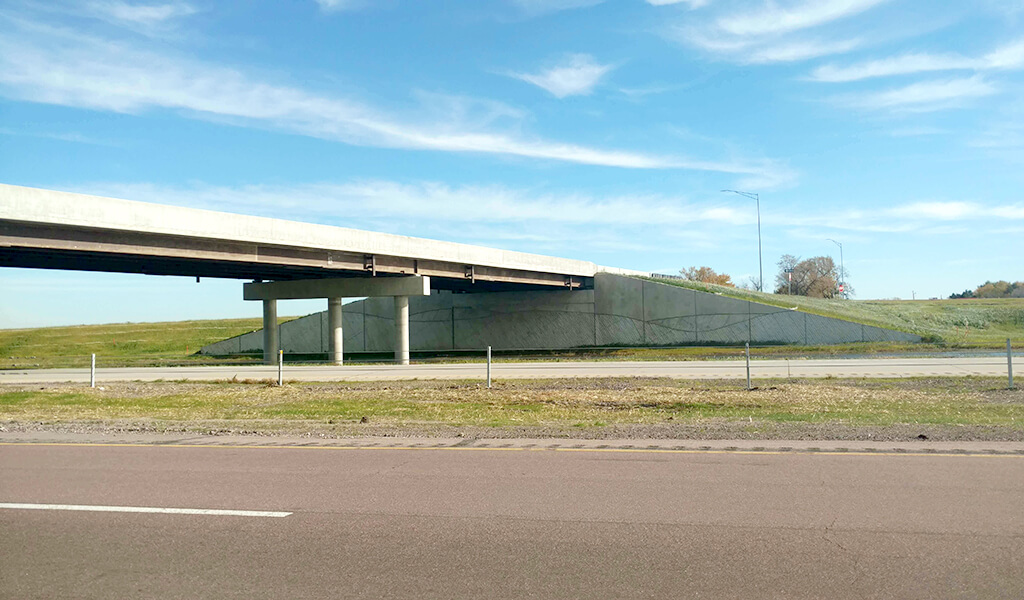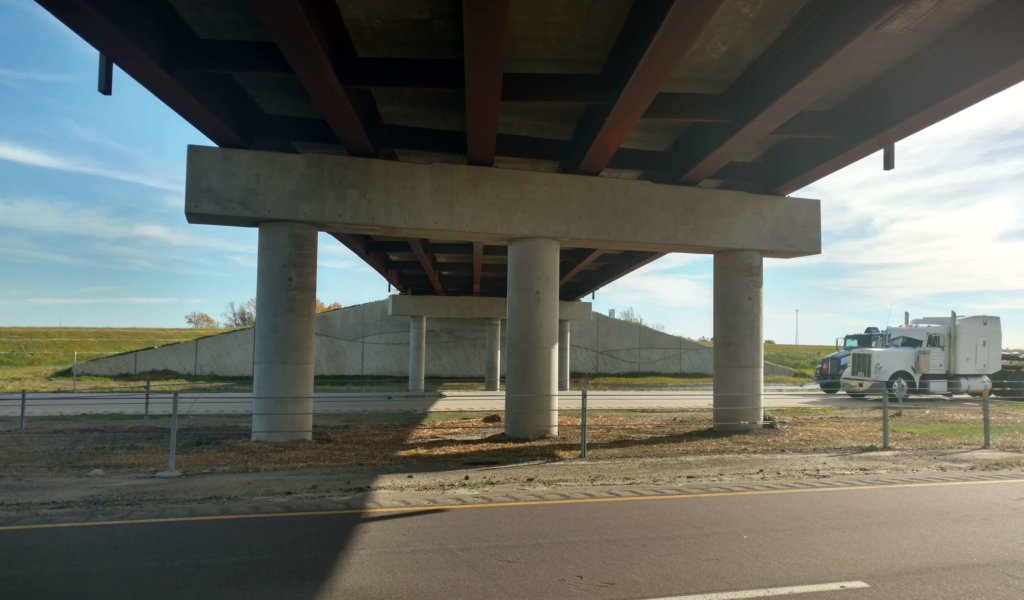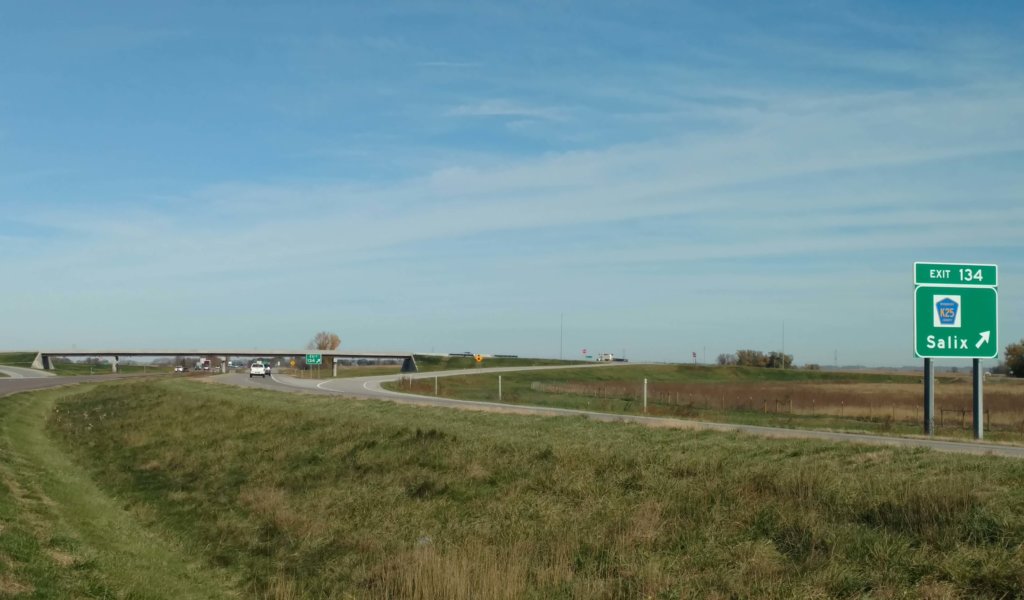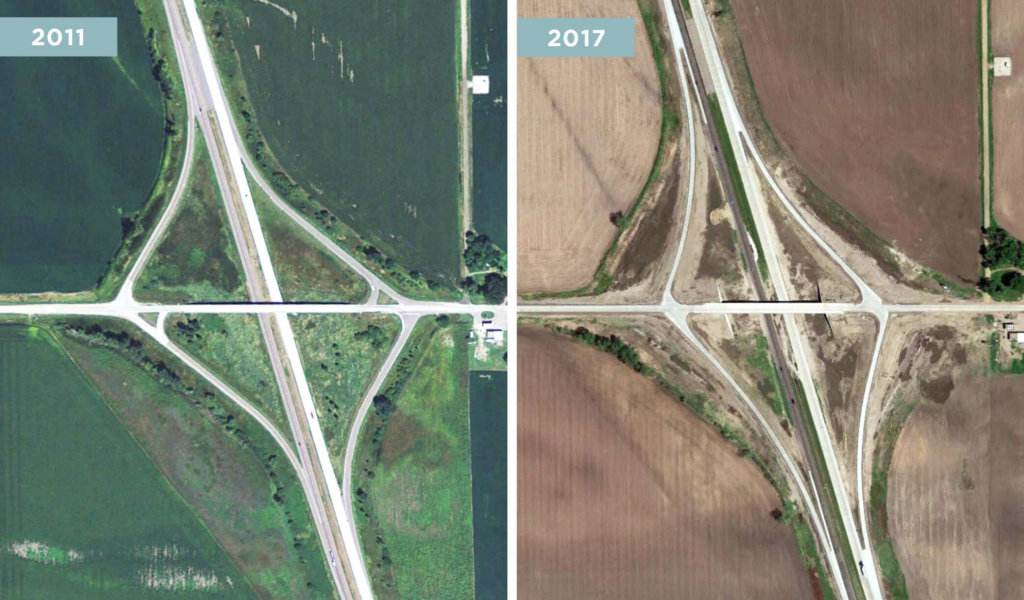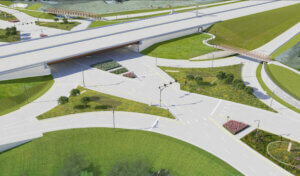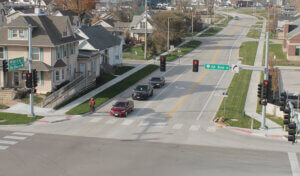
New Interchange & Bridge Design Faces Unique Challenges
In their ongoing efforts to improve outdated roadways and bridges, the Iowa DOT turned to Shuck-Britson (a subsidiary of Snyder & Associates) to design a new interchange and bridge to carry County Road K-25 traffic over Interstate 29 in Woodbury County. The existing interchange and bridge were built between 1958 and 1960 and both had surpassed their design life. Due to unexpectedly soft soil conditions encountered below the surface during this construction period, the original four-span, 215′-long bridge planned for the location had to quickly be changed to an 18-span, 734′-long behemoth to compensate for the poor soil.
In addition to not being cost-effective to replace this original bridge with an identical structure, there were several other factors that necessitated the reconstruction of the entire interchange, including:
- A low vertical clearance that didn’t meet current guidelines. The bridge had been struck by tall vehicles on numerous occasions over the years.
- An outdated interchange geometry that resulted in severe angles where the ramps intersected with the county road, as well as encompassing a large existing footprint.
- The need to evaluate and compensate for the less-than-ideal soil conditions.
Concept Study for Evaluating Bridge Replacement Possibilities
Shuck-Britson staff performed a bridge replacement concept study to determine the optimal design for the location and conditions. Two-, four-, and eight-span bridges were evaluated as replacement options. Also, the study assessed the soil impact on the bridge and embankment designs, as well as determined all remedial alternatives. Further, the study provided preliminary cost information for the alternatives presented.
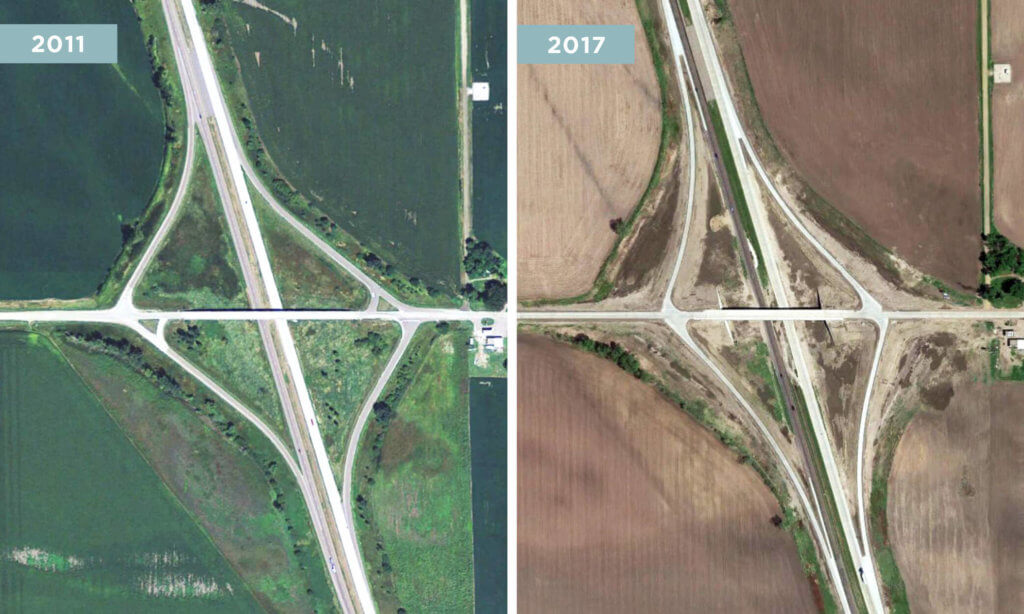
Prior to reconstruction, interchange geometry included ramp terminal intersections at angles as severe as 38° creating a relatively large footprint (left photo). Current design standards prefer intersection angles of 75° or more. Proposed geometry was designed to take advantage of the wide footprint and build a new interchange within the existing interchange (right photo). This eliminated the need for additional right-of-way and allowed staged construction to keep existing ramps open with limited disruptions.
Initial cost estimates indicated an eight-span bridge design with an increased interchange footprint would have the lowest cost. However, a four-span bridge utilizing Expanded Polystyrene (EPS) Geofoam fill was selected. The use of EPS Geofoam fill was the right solution to remedy the poor soil conditions. The weight from building up a typical bridge embankment would have caused extensive settlement over time causing severe maintenance issues for the client. The cost of the EPS fill was balanced with the bridge length to maximize economy and maintain required interchange sight distances.
The selected bridge design also minimized the weight of the superstructure, further helping to compensate for the soft soil conditions. The use of the EPS fill aided in limiting post-construction settlement of the bridge abutments to between ¼” and ½”. Additionally, the interchange geometry was updated to meet current standards while at the same time fitting within the existing right-of-way. During the one year construction period, complex staging was implemented to maintain traffic on the interchange ramps with limited disruptions.
Groundbreaking Steel Tests for the Iowa DOT
Shuck-Britson staff, working in coordination with the Iowa DOT and leading steel producers and fabricators nationwide, developed specifications and construction processes for building the new, 403′-long, continuous-welded, plate-girder bridge. For this bridge type, it is standard practice to specify a specific weathering steel material for the girders or bridge beams. Instead, due to the heavy use of deicing salts on the roadways during Iowa winters, the typical beam materials were reviewed and alternatives were investigated.
In light of this review, and at the request of the Iowa DOT, the I-29 bridge was the first in the state of Iowa to utilize A1010 structural stainless steel girders and the first in the country to utilize A1010 structural stainless steel in continuous girders. The A1010 stainless steel exhibits superior corrosion protection, which translates into lower maintenance costs over the life of the structure.
